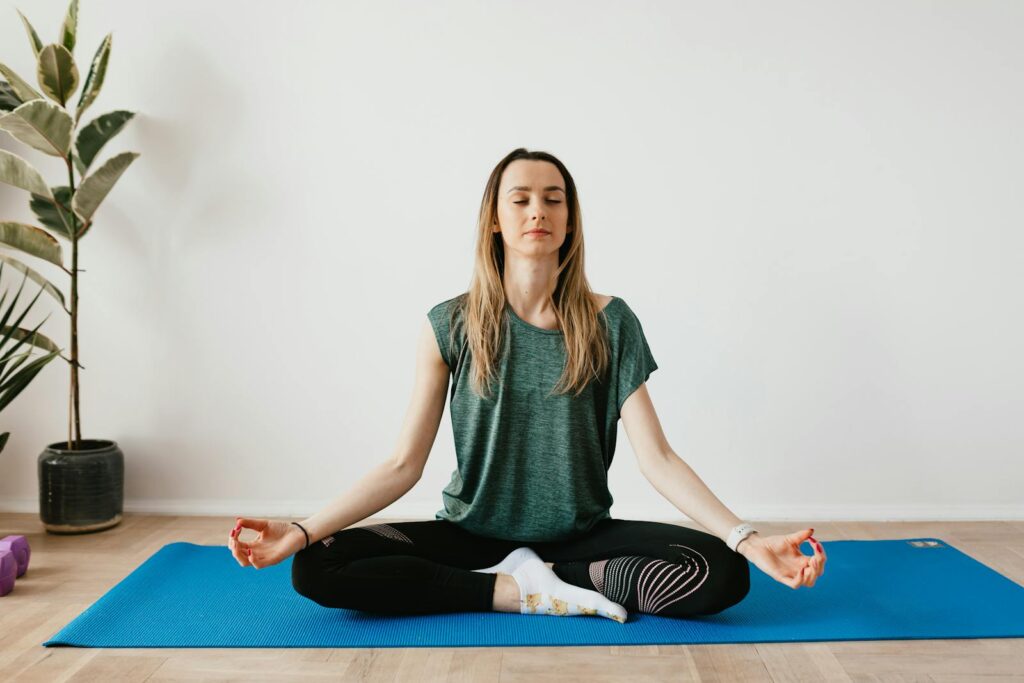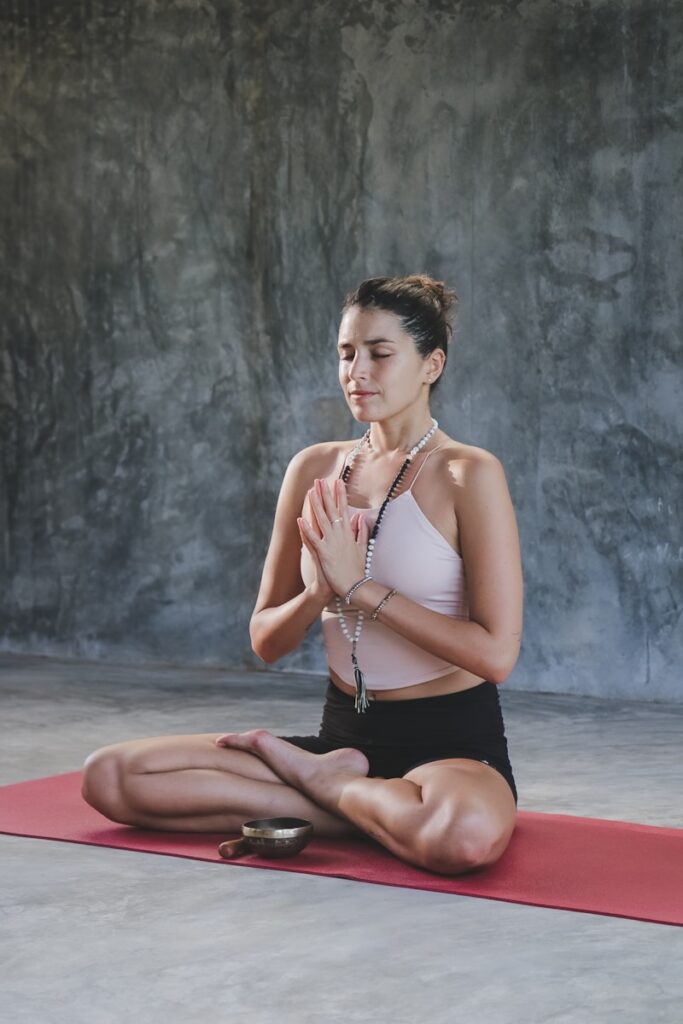
“Take a deep breath.” For anyone involved in sports, or indeed, anyone navigating the everyday pressures of life, this phrase is as ubiquitous as it is often dismissed. Athletes, whether frustrated, angry, anxious, or discouraged, frequently hear it from coaches, teammates, parents, and myriad others. Yet, despite its common usage, the advice can trigger irritation precisely because of its cliched nature, leading many to disregard its profound potential. However, if executed correctly, the simple act of breathing holds a transformative power, capable of significantly enhancing sports performance and a wide array of other skill-based endeavors.
Indeed, breathing, often taken for granted as an automatic bodily function, is experiencing a remarkable resurgence as both an art and a science. Much of this renewed interest is inspired by ancient wisdom, with detailed instructions on how to regulate, slow, and hold the breath originating from hundreds, and sometimes thousands, of years ago. The re-emergence of mindfulness, yoga, and other disciplines that integrate conscious breathing underscores a growing recognition of its benefits. Far from being quirky or weird practices associated with new age movements, these breathing-related activities are now being embraced and validated by highly disciplined fields, most notably the military and sports worlds.
This article dives deep into the profound impact of conscious breathing, exploring how it intimately affects the nervous system and optimizes an athlete’s ability to effectively execute the skills necessary for success. We’ll journey from historical perspectives and military-tested strategies to the precise science of optimal breathing and specific techniques that can empower you to gain a critical performance advantage. Take a deep breath, and let’s embark on this enlightening exploration to unlock your full potential on and off the field.

1. **Ancient Wisdom: The Timeless Power of Conscious Breathing**The profound understanding of breath is not a modern revelation but a legacy inherited from ancient civilizations. Imagine a stone inscription, penned around 500 B.C. in China during the Zhou dynasty, offering wisdom that still resonates today. It states: “In transporting the breath, the inhalation must be full. When it is in full, it has big capacity. When it has big capacity, it can be extended. When it is extended, it can penetrate downward. When it penetrates downward it will become calmly settled. When it is calmly settled, it will be strong and firm. When strong and firm, it will germinate. When it germinates, it will grow. When it grows, it will retreat upward. When it retreats upward, it will reach the top of the head.” This timeless insight, captured millennia ago, highlights the intrinsic link between breath, inner calm, and strength.
According to author James Nestor in his New York Times bestselling book, *Breath* (2020), “most sources focused on conscious breathing originate from hundreds and sometimes thousands of years ago.” These historical accounts weren’t merely philosophical musings; they included exhaustive, detailed instructions on how to consciously regulate, slow, and hold the breath. Ancient Chinese, Hindus, and Buddhists, as noted by Nestor, extensively discussed and documented these sophisticated breathing techniques, recognizing their immense power long before modern science began to catch up.
For a period, this profound art and science of breathing became somewhat lost, overshadowed by other advancements. However, it is now experiencing a significant resurgence, not only in practical application but also under intense research scrutiny. This modern revival is largely inspired by the very ancient practices that recognized breath as a fundamental tool for well-being and performance. Consequently, we are witnessing the re-emergence of disciplines such as mindfulness and yoga, which integrate conscious breathing as a core component of their execution, validating its enduring relevance and effectiveness.

2. **Military Precision: The “Pause, Notice, Choose” Framework**In high-stakes environments, where every decision carries immense weight, composure and wise decision-making are not merely desirable attributes but critical ingredients for success, and often, survival. This holds true for successful athletic performance, where split-second choices can define victory or defeat. In the military world, particularly in life-threatening contexts, the failure to incorporate these elements can tragically result in careless death. This extreme necessity has led to the development of highly effective strategies for maintaining calm under pressure.
U.S. Army personnel are rigorously trained in a principle known as “Pause, Notice, Choose.” This framework is designed to enable composure and facilitate effective battlefield decisions, recognizing that a moment of deliberate calm can dramatically alter outcomes. The core idea is that a brief pause before acting, coupled with a deep breath, allows for a calm clarity to emerge. This clarity sharpens awareness, enabling individuals to notice what is truly happening within their context, utilizing what Acceptance and Commitment Training (ACT) terms “five-sense awareness.” Eyes, ears, nose, tongue, and tactile information flood the brain, providing crucial situational surroundings that enable effective behavioral decisions.
The U.S. Army refers to this specific application as “deliberate breathing.” The rationale is compelling: if such a method proves effective in managing life-threatening military scenarios, it undeniably possesses immense potential for athletes and others navigating stressful, performance-driven situations. This powerful technique translates seamlessly to sports, where athletes face similar pressures, albeit with different stakes. Elite basketball players, for instance, preparing for a critical foul shot, instinctively adopt a similar routine: they take a deep breath, slow down their movements, fix their eyes on a small spot, and then execute the shot.
Baseball hitters, too, employ comparable strategies. Before every pitch, they engage in a brief, personalized routine that invariably includes deep breathing. This practice ensures optimal repetitions, effectively slowing them down and extracting them from the incessant “mind chatter” and emotional distractions that can undermine performance. By consciously breathing, they “get out of their heads and into the game,” allowing their eyes to precisely detect the rotation and location of the ball. This heightened awareness, facilitated by deliberate breathing, empowers them to make effective choices about what to swing at, ensuring optimal execution and the ability to “barrel-up” the ball, demonstrating that “Every rep counts,” and making a rep count requires effective rhythm (R), execution (E), and precision (P): REP. Thus, “Pause, notice, choose,” and, *voila*, a REP that truly counts.

3. **The Science of Optimal Breath: Aiming for 5.5 Breaths Per Minute**Beyond simply taking a deep breath, there’s a science to optimizing your respiratory rhythm. To illustrate this, consider a simple experiment you can try. It requires only a few minutes and a timing device. Begin by breathing as you normally would, counting each full breath (from the exact moment the inhale begins until the exhale is completed) for one minute. Before you start, take a guess at how many breaths you anticipate taking. “On your mark, get set, breathe.”
After this second round, reflect on the experience of slowed, deliberate breathing. How significantly did you reduce your breath count? What subtle shifts did you notice in your inner experience? Were you calmer, more composed? What changes occurred in your thoughts, feelings, and bodily sensations? This brief exercise powerfully demonstrates that such a state, induced by slowed breathing, can indeed profoundly improve your focus and performance across various activities.
But what exactly constitutes optimal breathing in scientific terms? According to research, the astonishing answer is 5.5 breaths per minute. This specific, slowed rate sends crucial biological messages to ease the body, primarily through the vagus nerve. This vital nerve, winding through the body, influences almost every internal biological function, including the critical regulation of heart rate. Crucially, it’s the elongated exhale that acts as the primary driver for slowing down the heart and releasing bodily tension. To perform a deliberate, truly effective slow breath, you should be able to both feel and hear the inhale, followed by a distinctly elongated exhale. Observers should also be able to visibly perceive and audibly distinguish your deep, controlled breathing.
In contrast, average human breathing typically falls between 12 to 18 breaths per minute. When we breathe faster than this, characterized by rushed, short inhales and exhales, a cascade of physiological responses is triggered. Our heart rate and muscle tension immediately increase, creating an internal environment that can lead to uncontrolled behavior, severely disturbing optimal sports performance, and crucially, creating or exacerbating anxiety. For some individuals, this rapid, shallow breathing can even trigger debilitating panic attacks. The profound implication here is that breathing stands as one of the very few bodily functions that are both automatic and consciously controllable. While its automatic nature prevents us from being “in big trouble when going to sleep,” its controllable aspect empowers us to intentionally slow it down and, in doing so, enable optimal function and profound states of calm.

4. **Unlocking Your Nervous System: How Breath Calms Body and Mind**The profound effects of breathing on our state of being are deeply rooted in our neurophysiology. As highlighted, a slowed breathing rate, specifically around 5.5 breaths per minute, communicates vital biological messages to ease the body via the vagus nerve. This remarkable nerve acts as a superhighway of communication, traversing the entire body and influencing nearly every internal biological function, including the intricate regulation of heart rate. The connection is direct and powerful: by consciously modulating your breath, you send explicit signals to your nervous system, initiating a cascade of calming responses.
It is the exhale, in particular, that plays a pivotal role in this physiological regulation. A prolonged and deliberate exhalation is what truly slows down the heart rate and relaxes bodily tension. To truly engage in an effective, slow breath, you should not only feel the full, deep inhale but also distinctly feel and hear the elongated exhale as the air leaves your body. This conscious engagement ensures that the parasympathetic nervous system, responsible for the body’s ‘rest and digest’ response, is activated, overriding the ‘fight or flight’ sympathetic response. Observers should also be able to both see and hear your deep, controlled breath, indicating its depth and deliberate nature.
Breathing holds a unique position as one of the few bodily functions that are simultaneously automatic and controllable. While its automaticity ensures our survival even during sleep, its controllability grants us an extraordinary tool for self-regulation. By consciously slowing down our breath, we can deliberately enable optimal function across various physiological and psychological domains. The impact of deliberate breathing practices on brain function is, at least in part, mediated by these vagus nerve pathways. Since heart and lung function are closely synchronized, and cardiac vagal control is conceptualized as a marker of emotional control, breath directly influences the central autonomic network (CAN), explaining its profound impact on mood and sleep quality.
Furthermore, breath has the remarkable capacity to enhance interoceptive processes. Interoception refers to our ability to sense and process visceral stimuli through the ascending branch of the brain-body axis, leading to the conscious perception of bodily processes. This internal awareness plays a crucial role in emotional experience, self-regulation, decision-making, and even consciousness itself. The perception of our internal physical processes has the potential to either amplify or modulate stress. Early recognition of one’s own stress response—such as increased heart rate, muscle tension, or gastrointestinal discomfort—can, paradoxically, transduce environmental discomfort into a physiological language that intensifies it, leading to a negative interpretation of subtle physiological shifts. However, the very same increase in interoceptive awareness, when channeled correctly, can also provide a perceptual window into one’s ability to reduce these physiological signs of stress, thereby fostering a heightened sense of control and the profound ability to regulate stress. This ability to consciously manage one’s internal state through breath significantly contributes to an increase in positive affect, empowering individuals to navigate challenging situations with greater calm and confidence.
5. **The SEALs’ Secret: Embracing “Slow is Smooth, Smooth is Fast”**“Slow is smooth, smooth is fast.” This powerful mantra, originating from the elite United States Navy SEALs, encapsulates a profound truth with immense applicability to sports performance and numerous other high-pressure endeavors. It speaks to the paradoxical efficiency found in deliberate, controlled execution rather than rushed, frantic effort. In the context of breathing, this principle provides a vital guide for athletes seeking to optimize their physical and mental states, especially when anxiety threatens to derail performance.
By engaging in slow, rhythmic breathing, athletes can achieve remarkable stability within their bodies. This includes the crucial regulation of heart rate, which directly influences both emotional and mental states. Furthermore, stabilized breathing contributes to more controlled and precise movement, thereby ensuring optimal rhythm, execution, and precision for sports skills. Consider the precise movements required in golf putting, the controlled release of a basketball foul shot, or the intricate mechanics of pitching or hitting a baseball. In each of these scenarios, a calm, stable physiological and psychological foundation, established through conscious breathing, is paramount for success.
What, then, is the practical advice for athletes and other performers seeking to embody this “slow is smooth, smooth is fast” philosophy? The recommendation is to cultivate slow, rhythmic breathing 24/7. This involves consistently inhaling through the nose and exhaling through the mouth. This continuous, conscious practice is akin to driving a car within the speed limit—it produces better control of the vehicle, which, in this analogy, is *you*. This enhanced self-control, cultivated through disciplined breathing, allows for the consistent achievement of optimal repetitions in any given task, leading to greater consistency and performance reliability.
When you find yourself losing control—whether due to anxiety, rushed movements, poor decisions, incessant mind chatter, or any other factor that threatens to “wreck performance”—that is precisely the moment to consciously re-engage with this principle. Pause. Take a deep breath or two, focusing on a full, deliberate inhale through the nose, followed by an elongated exhale out through the mouth. Remember the critical insight: it is the extended exhale that serves as the primary mechanism for slowing the heart rate, releasing tension throughout the body, and ultimately restoring composure. This deliberate interruption of a rising stress response empowers you to regain control and re-establish the smooth, fast rhythm necessary for peak performance. There you have it. Now, take a deep breath and go play.

6. **Diaphragmatic Breathing: The Cornerstone of Athletic Calm**Among the various breathing techniques available, diaphragmatic breathing stands out as a fundamental and highly effective method for managing performance anxiety in sports. It is a cornerstone technique because it directly addresses the physiological roots of stress, promoting a deep sense of relaxation and enhanced focus. This method, often referred to as “belly breathing,” consciously engages the diaphragm—a dome-shaped muscle located at the base of the lungs—rather than relying on shallow chest breaths. By harnessing the power of the diaphragm, athletes can unlock a more efficient and calming respiratory pattern.
The mechanics of diaphragmatic breathing are straightforward yet profoundly impactful. When you inhale, your diaphragm contracts and moves downward, allowing your lungs to expand fully and draw in a greater volume of oxygen. As you exhale, the diaphragm relaxes and moves upward, helping to push air out. This deeper inhalation significantly increases oxygen flow throughout the body, which in turn helps to lower heart rate and reduce overall muscular tension. The conscious effort to breathe deeply and efficiently sends clear signals to the brain that the body is safe and can relax, directly counteracting the “fight or flight” response triggered by anxiety.
Regular practice of diaphragmatic breathing can lead to a multitude of benefits crucial for athletes. Improved oxygenation not only aids in physical recovery but also sharpens mental clarity and focus, both of which are essential under the pressure of competition. Athletes who consistently incorporate this technique report feeling more grounded, centered, and better equipped to handle stressful situations. This heightened sense of control over their internal state contributes directly to improved decision-making and more consistent execution of skills when it matters most, leading to better outcomes and increased confidence during performance.
Beyond immediate anxiety reduction, diaphragmatic breathing offers universal benefits that contribute to overall athletic well-being and performance. It significantly enhances lung capacity, allowing athletes to sustain effort for longer periods and improve their endurance. Moreover, by promoting a state of calm and reducing physiological stress, this technique can also contribute to faster recovery times post-exertion and even better sleep quality, which is vital for an athlete’s regenerative processes. As a versatile and foundational tool, diaphragmatic breathing can be tailored to individual needs and seamlessly integrated into the training routines of athletes across virtually any sport, providing a robust platform for mental and physical resilience.

7. **Box Breathing: Mastering Rhythm for Focus and Composure**Box breathing, also known as four-square breathing, is another widely utilized and highly effective technique for athletes seeking to manage performance anxiety, cultivate relaxation, and sharpen their focus. This method distinguishes itself through its structured, rhythmic pattern, which helps to create a predictable and calming cadence for both the mind and body. The simplicity of its structure makes it an accessible tool for athletes of all levels, allowing for rapid deployment in high-pressure scenarios to quickly regain composure and mental clarity.
The technique derives its name from its four equal parts, much like the four sides of a box. It involves inhaling for a count of four seconds, holding the breath for four seconds, exhaling for four seconds, and then holding again for four seconds before the next inhale. This symmetrical pattern creates a powerful feedback loop that regulates the nervous system. The equal distribution of inhale, hold, exhale, and hold phases encourages a controlled and deliberate pace, preventing the shallow, rapid breathing often associated with stress and anxiety. By focusing on these four distinct phases, the mind is given a clear task, diverting attention from anxious thoughts and grounding it in the present moment.
The efficacy of box breathing stems from its physiological impact. By deliberately slowing down the respiratory rate and incorporating pauses, it actively reduces the production of stress hormones, such as cortisol, which can impair performance and decision-making. Simultaneously, the controlled nature of the breath increases oxygen flow to the brain and muscles, enhancing both mental acuity and physical readiness. Athletes frequently turn to box breathing as a strategic tool to calm their nerves directly before competitions, during timeouts, or even between intense moments within a game, allowing them to reset and refocus with greater precision.
Numerous studies and anecdotal evidence from athletes highlight the profound benefits of controlled breathing, including box breathing, in competitive environments. Research consistently indicates that these techniques can significantly lower heart rates, which is a direct indicator of reduced physiological stress. Furthermore, the enhanced mental clarity achieved through such controlled breathing practices empowers athletes to make better, more strategic decisions under pressure. By mastering the rhythmic discipline of box breathing, athletes can develop a reliable internal mechanism for self-regulation, ensuring they remain composed, focused, and ready to perform at their absolute peak when it matters most.

8. **The 4-7-8 Breathing Technique: Your Express Lane to Calm**Beyond the rhythmic precision of box breathing, the 4-7-8 technique offers a distinct, highly effective pathway to rapid relaxation and reduced performance anxiety. This method, rooted in activating the parasympathetic nervous system, provides a structured approach to calming both the mind and body. Its design emphasizes a prolonged exhalation, a key component in signaling the body to de-stress and unwind, making it an invaluable tool for athletes facing high-pressure moments.
The mechanics of the 4-7-8 breathing technique are elegantly simple and can be practiced almost anywhere. To perform it, you inhale quietly through your nose for a count of four seconds. Following this, you hold your breath for a count of seven seconds. The crucial step then involves exhaling completely through your mouth for eight seconds, making a gentle whoosh sound as the air leaves your lungs. This entire sequence constitutes one breath cycle, and the technique recommends repeating it for three additional breath cycles, totaling four breaths.
What sets the 4-7-8 method apart is the specific timing ratio, particularly the extended exhale. This longer exhalation phase directly stimulates the vagus nerve, which in turn helps to lower heart rate and blood pressure, shifting the body from a ‘fight or flight’ state to one of ‘rest and digest.’ For athletes, this means a tangible reduction in physiological symptoms of anxiety, such as a racing heart or tense muscles. Regular practice can enhance mental clarity and concentration, empowering athletes to maintain focus and execute skills with greater composure under competitive pressure.
Incorporating the 4-7-8 breathing technique into your routine can offer significant benefits beyond immediate anxiety relief. Consistent application helps train your nervous system to respond more calmly to stress over time, building a reservoir of resilience. Athletes can utilize this technique before competitions, during timeouts, or even after intense training sessions to aid in recovery and promote better sleep, proving its versatility as a powerful self-regulation tool.

9. **Pursed Lip Breathing: Steadying Your Pace Under Pressure**While some breathing techniques focus on depth and rhythm, pursed lip breathing offers a powerful, yet often overlooked, strategy for controlling breath rate and managing exertion, especially critical during periods of high physical demand or escalating anxiety. This technique focuses on slowing down the exhalation, which is essential for improving airflow and promoting a sense of control, making it particularly beneficial for athletes in endurance sports or those experiencing shortness of breath.
The execution of pursed lip breathing is straightforward. You begin by inhaling slowly through your nose, as you would normally, taking a comfortable breath. The key difference comes during exhalation: you purse your lips as if you are about to whistle or gently blow out a candle. Then, you slowly exhale through these pursed lips, making the exhalation at least twice as long as your inhalation. This controlled release of air prevents airway collapse and keeps the airways open longer, allowing more spent air to escape and making room for fresh oxygen.
Physiologically, pursed lip breathing helps to keep your airways open, which can reduce the work of breathing and ease feelings of breathlessness. For athletes, this translates into several advantages. It can help to regulate breathing during strenuous activity, preventing hyperventilation and conserving energy. By slowing down the respiratory rate, it also aids in reducing physiological stress, helping to maintain composure and focus even when pushing physical limits. This deliberate control over the exhale provides a tangible sense of mastery over one’s breath and body.
Athletes across various disciplines can integrate pursed lip breathing into their training and competition strategies. Runners might use it to maintain a steady pace during the latter stages of a race, while basketball players could employ it during short breaks or free throws to quickly regain calm and regulate their oxygen intake. Its simplicity and immediate impact make it an excellent on-the-fly tool for athletes looking to enhance their respiratory efficiency and mental resilience when performance anxiety or physical strain begins to build.

10. **Cyclic Sighing: A Scientifically Proven Mood Booster**Recent scientific inquiry has brought renewed attention to specific breathing patterns, revealing unique advantages that certain techniques hold over more generalized practices. Among these, cyclic sighing has emerged as a particularly potent method, supported by research for its significant impact on mood and physiological regulation. This technique leverages distinct features to produce benefits that can surpass those observed in traditional mindfulness meditation, offering athletes an advanced tool for emotional and mental optimization.
A study comparing various breathing exercises found cyclic sighing to be exceptionally effective in increasing positive affect and reducing respiratory rate. This method differentiates itself through two primary attributes: an extended exhalation and a unique double inhale that deepens the inhalation. The process typically involves a short inhale followed by a longer, second inhale, both through the nose, to maximize lung expansion, creating a sense of fullness. This is then followed by a prolonged, audible exhalation through the mouth, emptying the lungs completely. This specific pattern is designed to optimize physiological responses.
The profound effects of cyclic sighing are, in part, mediated through the vagus nerve pathways, much like other controlled breathing practices. However, its distinct structure appears to amplify these benefits. The double inhale increases the depth of oxygen intake, while the extended exhalation acts as a powerful trigger for the parasympathetic nervous system, effectively lowering sympathetic tone—the body’s stress response. This leads to a notable decrease in heart rate and muscle tension, fostering a deep sense of calm and well-being. The study data revealed that cyclic sighing produced the highest daily improvement in positive affect and the highest reduction of respiratory rate, significantly differing from mindfulness meditation.
The physiological and psychological benefits of cyclic sighing are not merely transient; they appear to last over time with consistent practice. This makes it an invaluable strategy for athletes seeking sustained improvements in their emotional regulation and overall mental health. By intentionally controlling breath with this specific pattern, athletes can actively enhance their mood, reduce chronic anxiety, and cultivate a robust inner calm that translates directly to more consistent and resilient performance both on and off the field. Its evidence-based efficacy positions cyclic sighing as a cutting-edge technique in sports psychology for managing anxiety and promoting positive states.

11. **Harmonizing Mind and Breath: The Power of Imagery**While conscious breathing techniques provide a robust foundation for physiological regulation, their impact can be profoundly amplified when combined with the power of mental imagery. This synergy between breathwork and visualization creates a holistic approach to managing performance anxiety, addressing both the physical and psychological dimensions of stress. Researchers are increasingly recognizing that the images we hold in our minds exert a powerful influence over our physiology, just as much as the words we tell ourselves.
Negative mental images, such as picturing a worst-case scenario, can inadvertently trigger and ramp up the body’s stress chemicals. This counterproductive visualization can lead to increased anxiety, muscle tension, and impaired decision-making—precisely what athletes want to avoid. Conversely, consciously crafting positive mental images, seeing what you *want* to happen rather than what you fear, can actively reduce stress and promote a state of ease in both mind and body. This deliberate mental conditioning becomes a critical component in achieving peak performance.
Combining deep breathing with imagery provides a dual mechanism for decreasing tension and stress. Athletes often respond to pressure by holding their breath or engaging in shallow breathing, which exacerbates anxiety. By intentionally practicing deep belly breathing or heart breathing in conjunction with specific mental images, they can effectively ease tension. For instance, the concept of “heart breathing,” as described in *Transforming Stress* by Doc Childre and others, encourages breathing from the chest area while simultaneously envisioning the heart, thereby linking breath and heart rate regulation directly to a calming mental focus.
The integration of breath and imagery empowers athletes to cultivate a present-focused mindset, effectively reducing intrusive worry thoughts. These tools provide an actionable focus that athletes can control, shifting their attention away from potential failures and towards desired outcomes. By consciously engaging both their breath and their imagination, athletes gain a potent internal mechanism for self-regulation, enabling them to navigate high-stakes situations with greater calm, confidence, and precision, ultimately enhancing their overall performance capabilities.

12. **Crafting Your Mental Blueprint: Practical Imagery Applications**Moving beyond the theoretical understanding of imagery’s power, applying it practically involves crafting detailed mental blueprints for success, especially when integrated with breathwork. The effectiveness lies in its ability to quickly replace negative images with vivid, positive expectations, providing the mind with a concrete task and direction. This isn’t just about abstract thought; it’s about seeing, feeling, and experiencing desired outcomes before they even occur.
Consider the example of a tennis player preparing for a serve. The process of linking breath with visualization can be broken down into actionable steps. The athlete imagines themselves at the baseline, seeing their opponent across the net. As they bounce the ball, they consciously take a deep breath, perhaps imagining breathing in from their heart area. With each subsequent bounce, another breath is taken, accompanied by a clear visualization of where they want to place the ball. Only then, with breath and imagery synchronized, do they execute the serve. This sequence, though quick, instills a present focus and replaces potential negative thoughts with a clear, positive intention.
This visualization strategy is not limited to literal depictions of a sports scenario. Abstract images can be equally, if not more, powerful in conveying a desired sensation or feeling. For instance, an athlete describing tension as a “sack of potatoes” might replace it with the image of being “cool as a cucumber.” Another athlete, feeling “all eyes on me” during a golf swing, successfully replaced this distracting image with the sensation of “being in the air” during snowboarding – a feeling of letting go and being carefree. These abstract mental cues can be processed faster than a string of words, providing instant relief and refocusing.
To effectively leverage abstract imagery, athletes are encouraged to follow a personalized three-step process. First, dedicate time to ponder what images genuinely evoke the desired visual or feeling, recognizing that images are highly personal (e.g., a beach might be soothing for one, but not another). Second, clearly define how that image will help and imbue it with vivid meaning, making it as impactful as possible. Third, consistently bring this chosen image to their sport, practicing its integration with breathwork during training sessions before attempting it in competition. This preparation ensures that when the pressure mounts, the athlete is ready to deploy their mental blueprint with confidence.

13. **Tailoring Techniques: Sport-Specific Breathing Strategies**The universal benefits of breathing exercises are undeniable, yet their optimal application often lies in tailoring the techniques to the unique demands of an individual’s sport. Different physical efforts and mental requirements inherent in various athletic disciplines necessitate a nuanced approach to selecting and implementing breathing strategies. What works for a marathon runner might not be the most effective for a competitive archer, highlighting the importance of sport-specific customization.
For instance, endurance sports, such as long-distance running or cycling, place a premium on efficient oxygen intake and sustained stamina. In these contexts, diaphragmatic breathing becomes paramount. By maximizing lung capacity and ensuring deeper, more efficient breaths, athletes can improve oxygen delivery to working muscles, delay fatigue, and maintain a consistent performance level over extended periods. The focus here is on augmenting the physical capacity to sustain effort, with controlled exhalations aiding in rhythm and energy conservation.
Conversely, sports that demand precision, fine motor control, and intense concentration, like archery, shooting, or golf putting, benefit greatly from slow, controlled breathing techniques. Methods like box breathing or the 4-7-8 technique can be instrumental in calming the nervous system, steadying the hands, and sharpening mental focus immediately before execution. The objective is to minimize physiological arousal and mental distractions, allowing for precise, deliberate movements critical to success in these highly technical disciplines.
Team sports, while dynamic and varied, can also integrate specific breathing exercises. Synchronized breathing techniques can foster group cohesion and collective calmness during huddles or strategic breaks, helping to align the team’s mental state. In contrast, individual sports often emphasize personalized breathing methods that address an athlete’s unique psychological needs and performance triggers. Understanding these distinctions allows coaches and sports psychologists to guide athletes toward the most impactful breathing strategies, ensuring that the chosen technique directly supports the sport’s specific performance goals and environmental pressures.

14. **Personalized Pathways: Customizing Breathwork for You**While general breathing techniques provide a strong foundation, their true power in managing performance anxiety is unlocked through personalization. Tailoring breath patterns, durations, and complementary visualization methods to an athlete’s individual needs, anxiety triggers, and preferred coping mechanisms significantly enhances their effectiveness. This bespoke approach ensures that the breathing exercise resonates deeply with the athlete, making it a more powerful and reliable tool under pressure.
One key personalization strategy involves adjusting the intensity and duration of inhalation and exhalation based on an athlete’s current anxiety levels. For instance, during moments of heightened stress, a slightly longer exhalation (as in the 4-7-8 technique or cyclic sighing) might be more effective at activating the parasympathetic nervous system for rapid calming. In contrast, when seeking to maintain a steady, focused state, a balanced, rhythmic pattern like box breathing, with adjusted counts, could be more suitable. This adaptability allows the athlete to fine-tune their breath response to varying demands.
Integrating personal triggers and specific sports imagery into breathwork further amplifies its impact. Instead of generic calming imagery, an athlete might visualize a perfect execution of a specific skill in their sport—a flawless tennis serve, a precise golf swing, or a strong finish in a race—while simultaneously practicing deep breathing. This mental anchor not only improves focus and calmness but also reinforces positive neural pathways associated with successful performance. The goal is to create a powerful, self-soothing routine that is intrinsically linked to their athletic aspirations.
Crucially, continuous monitoring and self-assessment play a vital role in refining these personalized techniques over time. Athletes are encouraged to pay attention to how different breathing patterns affect their heart rate, muscle tension, and mental state. Using self-assessment tools or even wearable technology can provide valuable feedback, allowing them to track progress and make necessary adjustments. This iterative process ensures that their breathing strategies remain dynamic, relevant, and optimally effective for their evolving performance context and personal growth, truly making their breath a personalized pathway to peak potential.

15. **Mastering Your Breath: Essential Practices for Peak Potential**To fully harness the transformative power of breathing techniques for managing anxiety and optimizing performance, athletes must embrace a holistic approach that extends beyond occasional practice. True mastery lies in consistent application, careful integration into daily routines, and a commitment to continuous refinement. By adhering to essential best practices and consciously avoiding common pitfalls, athletes can unlock their peak potential and cultivate enduring mental and physical resilience.
First and foremost, establishing a consistent routine is paramount. Breathing exercises are not a quick fix but a skill that improves with daily practice. Integrating techniques like diaphragmatic breathing or cyclic sighing into daily training sessions, warm-ups, cool-downs, or even specific moments throughout the day builds a strong foundation. This consistent engagement ensures that the body and mind become habituated to the calming responses, making them readily accessible when pressure mounts. The focus on diaphragmatic, or ‘belly,’ breathing remains central, as it ensures efficient oxygen intake and promotes deep relaxation.
Secondly, the synergy of visualization alongside breathwork cannot be overstated. Athletes should actively practice combining their chosen breathing techniques with vivid mental imagery, reinforcing calmness and desired performance outcomes. Whether it’s picturing a serene landscape or a perfectly executed play, this dual approach creates a powerful mental anchor. Furthermore, athletes must cultivate the ability to monitor their breathing patterns consciously, not just during practice but crucially during competition. This real-time awareness allows for immediate adjustments to maintain control and composure.
However, even with dedication, athletes can fall into common traps. Improper timing of exercises, failing to integrate them effectively into their routine, is a significant mistake. Shallow breathing, which limits oxygen intake and exacerbates anxiety, is another pitfall to actively avoid. Neglecting the elongated exhalation—a primary driver for slowing heart rate and releasing tension—can also diminish effectiveness. Moreover, treating breathing exercises solely as physical tasks, without engaging the crucial mental component of self-regulation and awareness, undermines their full potential. It’s about consciously shifting states, not just moving air.
Finally, the journey to optimize breathing techniques for peak performance is continuous. Athletes should actively seek feedback from coaches, sports psychologists, or even peers to refine their methods. Experimenting with different counts, rhythms, and imagery elements allows for fine-tuning based on individual responses and performance demands. By committing to these best practices, avoiding common mistakes, and embracing a personalized, adaptive approach, athletes can transform their breath into a reliable, powerful tool for managing anxiety, enhancing focus, and consistently achieving their highest potential on and off the field. This conscious control over a fundamental bodily function empowers athletes with a profound sense of self-mastery, enabling them to truly “go play” with unwavering confidence and composure.




